Investing in Sports Cards in 2025 (& Alternatives to Explore)
If you’re considering investing in sports cards, you’ve come to the right place.
This would be an ideal investment if you’re super passionate about sports or simply if you have rare sports cards or old sports memorabilia lying around!
Let’s explore four ways to invest in sports cards, how to start your sports card investing journey, five sports cards to invest in, and more.
We’ll also look at an excellent alternative investment (fine wine).
Further reading
- Discover the bet Collectible Investments worth investing in.
- Keen to invest in a profitable alternative asset like fine wine? This Guide To Investing in Wine is all you need.
- Explore everything about Sustainable Investing - how sustainable investments perform, the best assets to invest in, and more.
Investing in Sports Cards: 4 Types of Cards to Collect
Here are the four different investment strategies based on the types of sports cards:
- Rookie Sports Card Investing
- Vintage Sports Card Investing
- Graded Sports Card Investing
- Milestone Sports Card Investing
1. Rookie Sports Card Investing
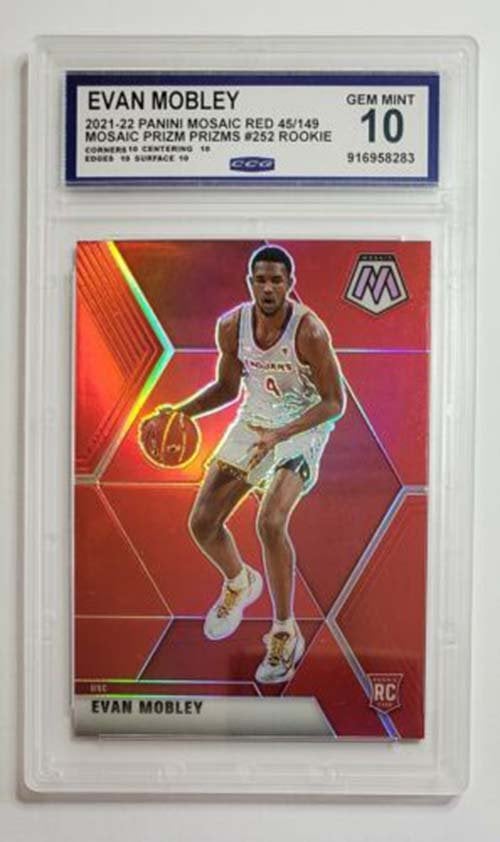
Rookie card investing is a low-risk, high-reward strategy.
With this option, you look out for players with the potential of becoming the next Tom Brady or Michael Jordan. This means you need to understand which new players are destined for greatness.
Here are some examples of great rookie sports cards:
- Evan Mobley’s 2021-22 Panini Prizm NBA Red Rookie Card: At 7ft Evan Mobley has shown outstanding athleticism along with putting up solid scoring numbers. His rookie card goes for around $270 and is sure to skyrocket as his career progresses.
- 2022 Topps Wander Franco Rookie Card: 21-year-old Wander Franco has already proved his outstanding bat-to-ball ability with a 43-on-base game streak. His rookie card goes for around $65, which could prove to be a strong future investment.
Rookie cards are usually less expensive. But if the players perform well, the card price is likely to skyrocket.
2. Vintage Sports Card Investing
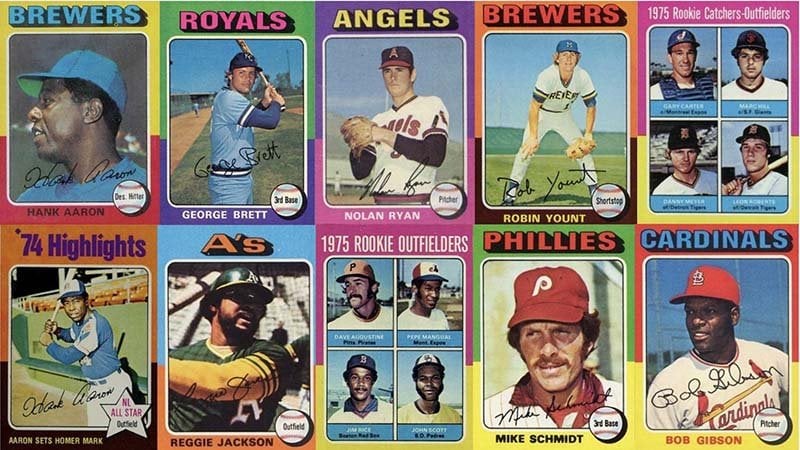
Investing in vintage sports cards can be a potentially attractive option for your portfolio.
Unlike rookie cards, vintage cards tend to be expensive while offering the best returns.
A few notable vintage sports cards include:
- Ronaldo Nazario 1998 France World Cup Card: At the 1998 FIFA World Cup Ronaldo Nazario won the Golden Ball, cementing him as the best player in the world at the time. He is a legendary figure in soccer history. This vintage card goes for around $880.
- 1958 Jim Brown Topps Card: Jim Brown has been described as the NFL’s most feared running back of all time. His 1958 rookie card is a great example of how rookie cards can appreciate in price but is also a good example of a pricey vintage card. This card goes for around $750.
To get started, look for rare vintage cards (particularly those from the 1950s and 1980s) at places like the Goldin Auction.
3. Graded Sports Card Investing
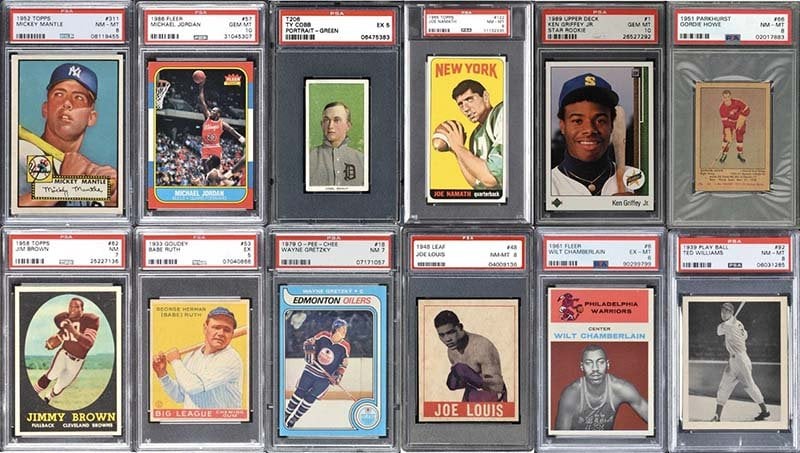
When it comes to sports card investing, the grading of a card might be your make or break.
Why?
The grading of a card proves its authenticity and increases its price. Also, when the sports card market is unstable, graded cards tend to increase in value more than ungraded ones.
So, go for cards graded by reputed grading bodies such as the Professional Sports Authenticator (PSA) or Beckett Vintage Grading (BVG.)
4. Milestone Sports Card Investing
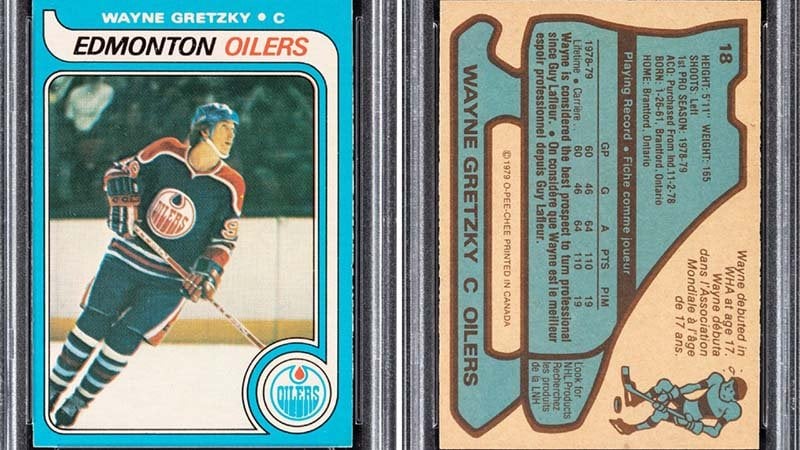
A milestone sports card is one that commemorates a special moment in the career of a player or team.
Big sporting events or special season’s in a player’s career might produce milestone cards that will go for a big money.
Ideally, you should buy the cards of notable players before the event kicks off. If your predictions are correct, and the player performs well, the value of those cards will increase substantially after the sporting event.
For example, the Ja Morant NBA Rookie Card drastically increased in price following the 2022 NBA playoffs.
That was after Morant broke the postseason clutch-time scoring record with 47 points. He also averaged 38.3 points, 8.3 assists, and 6.7 rebounds against eventual NBA champions the Golden State Warriors.
So, keep an eye out for exciting rookie cards before significant sporting events.
Now, how do you start investing in sports cards?
How to Start Your Sports Card Investment Journey (5 Useful Tips)
Here are the tips that’ll help you in your sports card investment journey:
- Establish a Budget
- Research The Sports Card Market
- Develop and Stick to an Investment Strategy
- Know When to Buy and Sell
- Diversify your Portfolio
1. Establish a Budget

Before you start investing in sports cards, decide how much you want to spend on this investment.
If you’re looking to maximize your returns, it’s important not to overextend your budget for the cards you’re trading.
2. Research the Sports Card Market

To get started with sports card investment, keep an eye on industry trends and news, speak to some experts, and watch informational videos on market trends.
Ken Goldin hosts a card show on Netflix which demonstrates how he manoeuvres through the sports card industry. Watching his card show could teach you a lot about the sports card market.
3. Develop and Stick to an Investment Strategy

There are various sports card investment strategies that you can try.
Some strategies include:
- Card flipping: Buying a card with the intention of selling it for profit in a short period of time.
- Long-term holding: Holding onto a card, like a rookie card, for 10+ years, could help you see bigger profits in the long term.
- Players you like: Buying the cards of players you like and believe in. This strategy is more based on personal opinion.
While all of these strategies are viable it’s best to decide a method based on your risk tolerance and market understanding.
Why?
Every sports card investor has a different risk tolerance and opinions on players, manufacturers, and market trends. So, the same approach won’t work for everyone.
Developing a coherent investment strategy will significantly improve your chances of success.
4. Know When to Buy and Sell
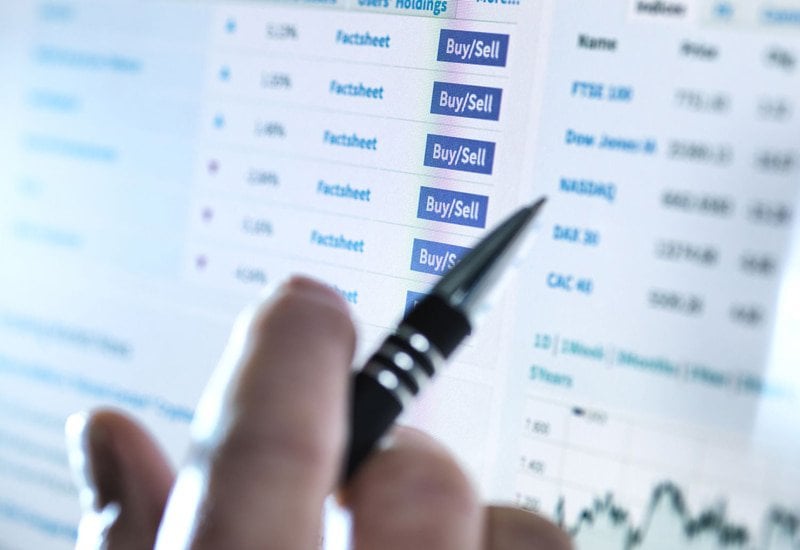
Knowing the best time to buy and sell your sports trading cards is critical.
For example, buying an NFL Justin Herbert individual card could be cheap now. But based on the player’s performance, this card may skyrocket in value in the future and you’ll have to shell out much more to buy one.
Knowing when to buy and sell is also informed by your personal opinion and investment objectives.
5. Diversify your Portfolio

When investing in sports cards, you shouldn’t put all your eggs into one basket. Find a balanced mix of low-risk and low-return, high-risk and high-return sports trading cards, rookie cards, vintage cards, and more.
Now, what determines the value of your sports cards?
How to Determine the Value of Sports Cards
These are the factors that cause card prices to either go up or down.
- Card Age (Modern vs Vintage)
- Card Rarity
- Card Grading
- Card Condition
- Relevance and Performance of the Athlete
- Trends in Sports Card Investing
1. Card Age (Modern vs Vintage)
The age of a sports card can greatly influence its value. In most cases, investing in vintage cards would turn out more profitable than investing in modern cards.
Why?
Vintage cards of retired players usually have a more fixed and determinable price.
But, cards of current sports stars like NBA top shot Luka Doncic and football player Lionel Messi may fluctuate in price. This depends on various factors, such as player performance and injuries.
However, others consider modern cards as a profitable short-term investment. That’s because there’s usually a lot of excitement around current high-performing players.
2. Card Rarity
The rarer a sports card is, the more a collector will be willing to pay for it.
However, having fewer copies of a card in circulation doesn’t necessarily mean the card is valuable. Other factors like player popularity, future potential, and career stats influence the card’s overall value.
Before simply investing in a “rare” card, ask yourself why that individual card is rare. Use population report tools to compare and find rare cards with high values.
3. Card Grading
Graded cards are scored by grading companies such as PSA and Beckett. Meanwhile, raw cards are ones without grading.
It’s often far more expensive to buy a graded card than an ungraded one. But when it’s time to sell, you’d usually get higher returns for a graded card than the ungraded one.
So, raw cards are generally ideal for recreation purposes. But if you’re serious about sports card investments, then graded cards can be a great choice.
4. Card Condition
The condition of a sports card affects it’s grading score and value.
To get the best returns for your sports trading cards, ensure that the surface and corners are in a good condition.
5. Relevance and Performance of the Athlete
The fame, cultural importance, and performance of an athlete play a major role in the value of their sports card. For example, Kobe Bryant’s sports cards will likely be far more valuable than most basketball cards.
Why?
This is because of the impact Kobe made on the basketball scene. Besides being an incredible basketball player, he also participates in the NBA Cares initiatives to help various foundations.
Now, which sports cards should you add to your portfolio?
6. Trends in Sports Card Investing
While investing in sports cards relies on your personal preferences and investment objectives, it’s also critical to be up-to-date with the latest trends in the sports card trading space.
Some of these noteworthy trends include:
- Digital Collectibles: With the advent of blockchain technology and non-fungible tokens (NFTs), you can opt for digital collectibles in the sports card trading market. They attract technologically inclined collectors and provide benefits like authenticity verification and more rarity.
- Online Platforms: Emerging online platforms and marketplaces provide collectors the opportunity to trade in sports cards globally and help with easy buying and selling.
- Emerging Markets: As sports card trading spreads to emerging markets, the consumer base and fandom expand, providing more growth avenues for collectors.
- Varying Consumer Preferences: The demand for specific sports cards changes with new trends and evolving consumer preferences. You must keep an eye out for these shifts and change your investment strategy accordingly.
Now, which sports cards should you add to your portfolio?
The 5 Best Sports Cards to Invest In
These are the five sports cards that deserve a spot in your investment portfolio:
- 2019 Lionel Messi Topps Living Champions League Card
- 2021 Bowman Draft Marcelo Mayer Card
- 2018 Juan Soto Topps Update Baseball Card
- 2003 Carmelo Anthony Prizm Rookie Card
- 2020 Panini National Treasures Justin Herbert Rookie Card
1. 2019 Lionel Messi Topps Living Champions League Card ($90)

If you’re considering investing in football cards, look no further than the 2019 Lionel Messi Topps Champions League card. This valuable card is #1 in the Topps Uefa Champions League Living Set, which commemorates Europe’s best footballers.
There are about 3500 copies of this rare individual card. So, its value will undoubtedly continue to rise over the coming years.
2. 2021 Bowman Draft Marcelo Mayer Card ($200)

Marcelo Mayer is one of the top players in Major League Baseball - he currently ranks 7th on the MLB (Major League Baseball) Top 100 Prospects list.
The value of this rare card was showcased at a recent auction where someone paid an incredible $132 000 for it. The card sold was autographed and was PSA grade 9, which undoubtedly increased its price.
This shows the value of investing in rookie baseball cards.
3. 2018 Juan Soto Topps Update Baseball Card ($335)
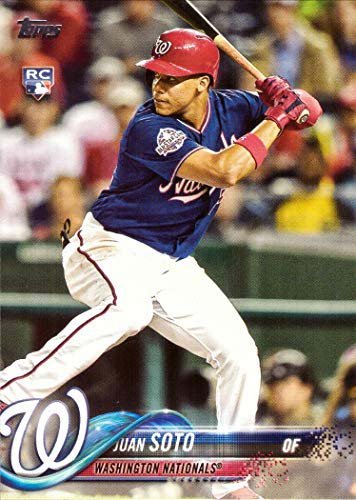
Juan Soto is one of the biggest names in modern-day baseball.
Juan Soto’s Update Rookie #US300 exploded in popularity in late 2019, after he helped the Washington Nationals beat the Houston Astros to the World Series.
The fact that he’s still young means he has a long career ahead of him. So, getting his valuable card right now could be a fantastic investment strategy for long-term gains.
4. 2003 Carmelo Anthony Prizm Rookie Card ($2,000)

The legendary Carmelo Anthony is one of the greatest scorers in the sport despite lengthy absences due to injury.
Cards of popular players tend to be far more valuable, and that applies to Carmelo’s 2003 Basketball Card. In 2003, Anthony broke the freshman record at the NCAA tournament, which kickstarted his rise to NBA fame.
The card commemorates the early years of this NBA legend.
5. 2020 Panini National Treasures Justin Herbert Rookie Card ($100)

At 24 years old Justin Herbert is already considered as one of the best quarterbacks in the National Football League.
National Treasure Set cards are usually quite valuable and Justin Herbert’s 2020 is a must-buy for set collectors.
Now, let’s explore the difference between sports card investing and collecting.
Collecting and Investing in Sports Cards: What Are the Differences?
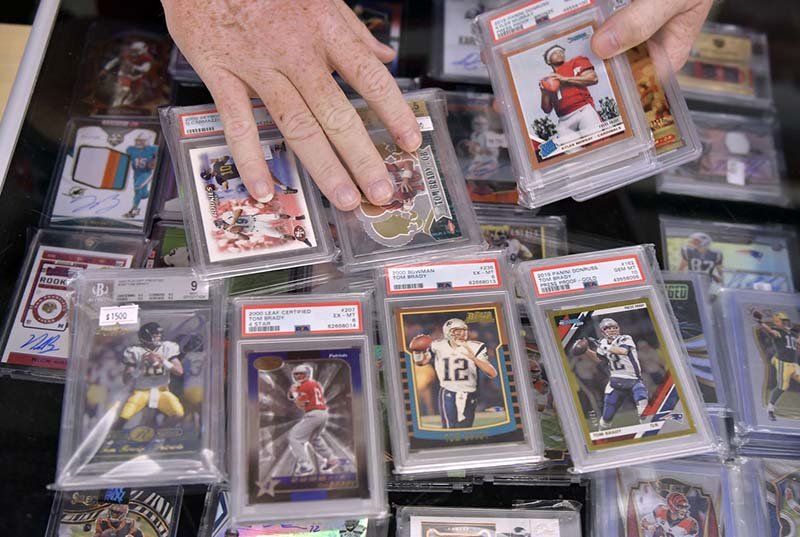
Some people are into sports card collecting, while others prefer sports card investing.
How are they different?
It’s quite simple.
- Sports card collecting: Card collectors buy sports cards and memorabilia for recreational purposes regardless of the cards’ future value.)
- Sports card investing: Investors, on the other hand, are always cognizant of prices and sports card market trends. This means sports card investing is done by those who want to make a profit.
But is it really worth putting your money into sports cards?
Are Sports Cards a Good Investment?
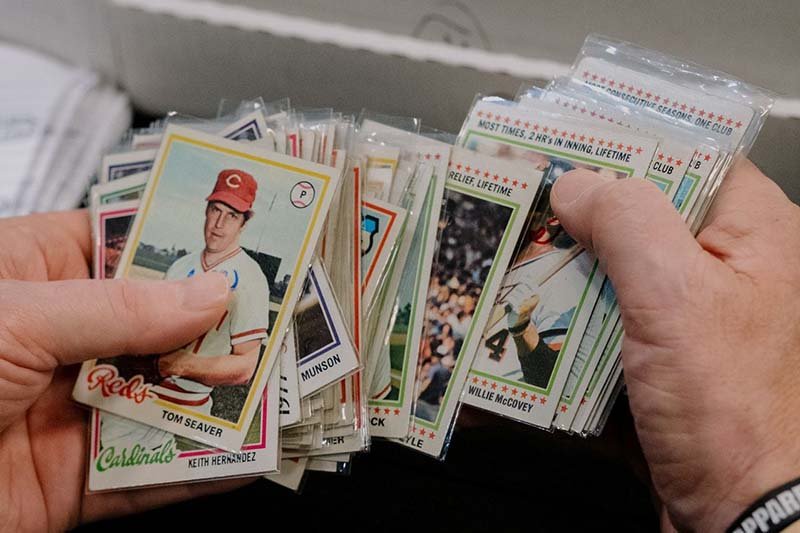
Sports cards are a good way to diversify your investment portfolio.
Sports card sales surged by 142% in 2020 as card investors had more time to spend tracking the market - thanks to the pandemic. eBay predicts that, while this surge was an isolated incident, the market will continue to grow.
Basketball cards have also seen a whopping 300% increase in value and sales over the past year as the popularity of the sport continues to grow.
Lastly, experts predict the recent advances in NFT and crypto technology could positively impact the sports card market. As more digital representations of cards begin to emerge, the market could become more stable.
Besides, the trading card market is expected to continue increasing in value in the future.
However, there are a couple of risks associated with sports card trading:
- Sports cards are usually not as liquid as other collectible assets. Card collectors and investors may find it hard to sell their cards later.
- It’s often hard to determine the value of a sports card — especially if it’s an ungraded one.
- Trading cards can also fluctuate in value drastically. Something like a minor scratch can lower the value of a sports card substantially. You’ll have to keep your cards in great condition.
- Researching and keeping track of the trends in the sports card market can be quite tedious.
Alternatively, you could explore other profitable, high-return investments such as fine wine!
Fine Wine Investment: An Excellent Alternative

If you want a high-performing alternative investment, look no further than fine wine!
Here are some benefits of investing in fine wine:
- Unlike trading cards, fine wine usually shows a stable performance and price appreciation.
- Wine has outperformed most assets and the Global Equity Index (GEI) for the past 15 years — even during economic downturns. It delivered 304.4% returns by late 2021, while the GEI delivered 196.7% returns during the same period.
- Fine wine has delivered steady, positive returns of 13.6% over the last 15 years.
- It is not correlated to traditional markets, so it is less volatile. The S&P 500 has yielded 8.58% returns in the last 15 years, while wine has returned 13.6% in comparison.
Sounds lucrative?
But how do you invest in the finest wine bottles?
Though Vinovest — an AI-powered platform that helps you buy, store, and sell investment-grade wines from around the world.
It stores your wines in bonded warehouses and doesn’t charge you any VAT or excise duty for this. Also, Vinovest only charges you a 2.5% annual fee (1.9% for portfolios of $50,000+), which covers insurance, storage, fraud detection, and portfolio management.
But that’s not all! Visit the Vinovest website to learn more.
Investing in Sports Cards: Is It Really Worth It?
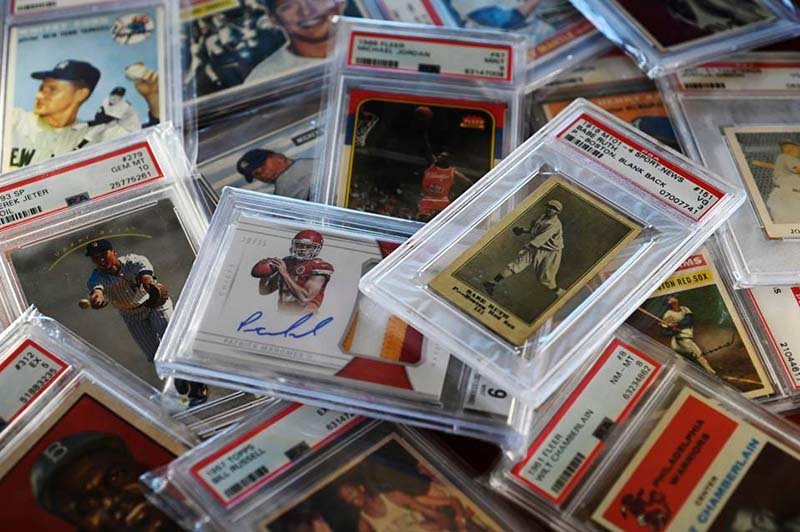
Investing in sports cards is an awesome hobby that you can turn into an investment.
However, the sports card market tends to be too risky and illiquid. This means sports card investing might not really give you the best returns.
So, what’s an easy way out? Investing in a profitable asset like fine wine!
Sign up with Vinovest today to start putting your money into the world’s best wine bottles.



